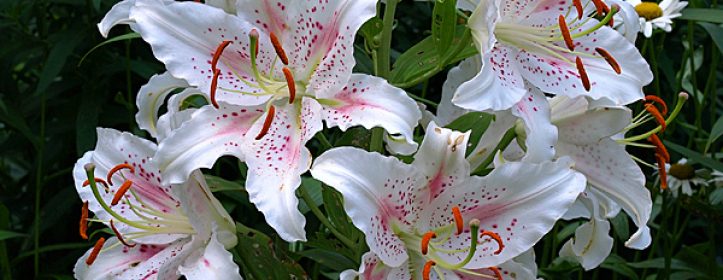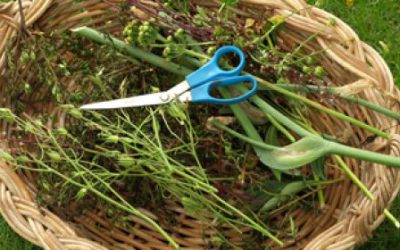For The Love of Lilies

Finally it’s April. The clocks are turned ahead and, once we get adjusted to our new sleep pattern, we’ll be able to enjoy some extra daylight after work. We can thank March weather for providing us with plenty of moisture that should make up for the lack of snow over winter. This pleases me since I have the feeling that we’ll be facing a spring & summer similar to last year’s.
For those who can’t remember, we had a warm April and May that allowed us to get a real jump on the season’s planting. Around the second week of June we saw the end of any rain until very late in August. If I’m right and this scenario is repeated this year, we’ll be glad that the groundwater levels are what they should be to carry us through another hot, drought plagued summer. Only time will tell. Gardeners are, by nature, an optimistic lot and will proceed with the necessary projects assuming that each season will be the best one ever.
One project that I like to tackle this time of year is adding to my collection of hardy lilies. It’s a great project for the cooler days of early spring since lily bulbs take advantage of cooler soil temperatures to get their root system established and won’t mind a few freezing nights. At Easter time, lilies are in great demand as a symbol of that holiday. While the cultivars that growers force into bloom for that holiday are not winter hardy, many of their cousins are. I’m afraid that folks who’ve planted Easter lilies hoping that they would return the next year have made the assumption that all lilies die over winter. Nothing could be further from the truth.
The lilium segment of the larger liliacae family contains some of the showiest flowers to be found anywhere and many of the thousands of cultivars thrive in our northern climate including two of my favorites; Asiatic and Oriental Hybrids. Asiatic hybrids are the first of the lilies to flower in early summer. They are also the most cold tolerant of all lilium forms. Asiatics also mature and reproduce rapidly, making them a rewarding choice for those just starting to dabble in lily growing. Asiatics are available in reds, whites, pinks, oranges, and yellows of every shade. Some feature solid colored petals while others are ornately speckled. Asiatics are not strongly scented but come in a range of sizes from 2′ to 5′!
To find fragrance, we must sniff out the Oriental lily hybrids. Although not quite as winter hardy as their Asiatic cousins, many Oriental varieties are hardy in zones 4 and 5; hardy enough to thrive in our area. Oriental lilies will produce some of the largest, showiest flowers that you could expect this side of the tropics. A sub-group of the Oriental lilies are the Imperial hybrids. Imperial lilies produce large, sometimes huge flowers on sturdy stems. The Imperial Gold strain, for instance, produces 5” to 7” fragrant flowers on plants up to 7′ tall. That’s right, 7′! Those who travel the tropics and return whining that we can’t grow anything to compare should wake up and smell the lilies!
All lilium varieties grow from bulbs. You’ll start seeing them in garden centers in March. They’ll be offered bare-root in plastic bags. Shop for them early so you can pick out the fattest ones from the group offered. The fatter the bulb, the better the plant.
Plant your lilies as soon as the ground has thawed. Choose a location that is in full sun and make sure it’s a location that doesn’t puddle up after a heavy rain. Dig your holes about 3 times as deep as the bulb is tall. As usual, I’ll insist that you add bone meal to the planting hole. After enjoying your lilies for 3 or 4 years, you’ll notice that you’re getting more plants and flowers but they aren’t as tall as they used to be. This is a signal that they’re crowded and need to be dug and divided. This can be done in fall after frost or early spring when they’ve just started to sprout from the soil (adding more bone meal of course).
There are many more lilies than the two mentioned here. They’re showy and very easy to grow making them a great choice for the novice or experienced gardener who wants to impress friends and neighbors.







Recent Comments